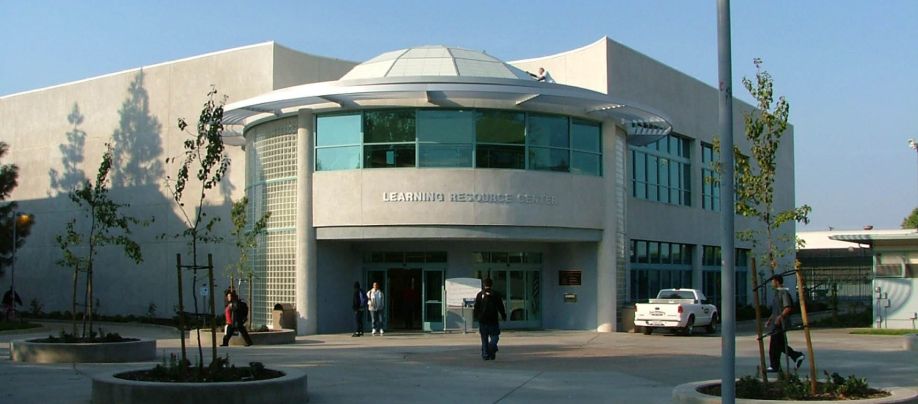Your Guide to Accessing Essential Funding Programs

Facilities leaders consistently identify funding as their biggest challenge. Did you know there are government funds to pay for facility upgrades, technology, safety, security, and emergency preparedness?
While money can’t solve every facility problem, having sufficient funds can help with purchasing key supplies and services, investing in renovations and revitalizations, helping short-staffed teams accomplish more, and adding a layer of safety and security where needed.
Facilities teams are using software to help gather data to make better informed decisions in the field to in aid safety and security. As many facility team members are constantly on the go, using a mobile platform to access your organization’s building and equipment information provides an instant productivity boost – compared to searching through paper plans, binders, notes, and hard drives.
ESSER Funds
ESSER funds, short for Elementary and Secondary School Emergency Relief funds, were established by the U.S. federal government to assist schools in responding to the impacts of the COVID-19 pandemic and are still available today.
ESSER funds can be used for a wide range of activities, including purchasing personal protective equipment (PPE), enhancing remote learning capabilities, addressing learning loss, and improving school facilities. The goal is to ensure educational continuity and equitable access to quality education.
- Collaborate with your district’s finance team to identify specific needs that align with these uses.
- Highlight technology needs, such as air quality monitoring, emergency preparedness systems, and technology solutions that help improve the school’s ability to respond to emergencies.
- Focus on long-term infrastructure improvements. Emphasize projects that improve learning environments, including advanced software for facility management, to ensure a safe and efficient campus.
- Coordinating preparedness and response efforts with the Local Education Agency (LEA) with state, local, tribal, and territorial public health departments, and other relevant agencies, to improve coordinated responses with other agencies to prevent, prepare for, and respond to coronavirus.
- Providing principals and other school leaders with the resources necessary to address the unique needs of their individual schools.
- Developing and implementing procedures and systems to improve the preparedness and response efforts of LEAs.
- School facility repairs and improvements to enable operation of schools to reduce risk of virus transmission and exposure to environmental health hazards, and to support student health needs.
- Inspection, testing, maintenance, repair, replacement, and upgrade projects to improve the indoor air quality in school facilities, including mechanical and non-mechanical heating, ventilation, and air conditioning systems, filtering, purification, and other air cleaning, fans, control systems, and window and door repair and replacement.
Deadline: The deadline for obligating funds from Phase III of the Elementary and Secondary School Emergency Relief (ESSER III) is September 30, 2024. After this date, Local Education Agencies (LEAs) have an additional 120 days to liquidate these funds. However, there is an option to request an extension to use or liquidate these funds until March 2026.
Contact:
To inquire about ESSER funds, you can contact the following:
- Local School District Office: They can provide information on how ESSER funds are being utilized within your specific district.
- State Department of Education: Each state has an ESSER fund coordinator or contact person who can provide detailed information and guidance
- U.S. Department of Education: For federal-level inquiries and comprehensive information, visit the U.S. Department of Education’s website or contact their Office of Elementary and Secondary Education.
Each of these sources will be able to provide specific details, application procedures, and guidance on how to access and utilize ESSER funds effectively.
Department of Homeland Security Preparedness Grants
Funding: $1.8 billion for state, local, tribal, and territorial officials
Uses: Preparedness, prevention, protection, and response to terrorism and disasters
Where to start: Apply for grants that can be used to enhance facility security and emergency preparedness. Focus on areas like emergency communication systems, building security enhancements, and disaster response planning.
Deadline: Expiration dates for the Department of Homeland Security Preparedness Grants vary depending on the specific program.
For example, the Fiscal Year 2024 Homeland Security Grant Program (HSGP), which includes the State Homeland Security Program (SHSP), the Urban Area Security Initiative (UASI), and Operation Stonegarden (OPSG), requires that the funds be utilized within a specified performance period that typically starts in October, 2024 and ends 36 months later, around September, 2027.
(FY24 Homeland Security Grant Program) (DHS - Notice of Funding Opportunity)*
Non-Profit Security Grant Program
Funding: $274.5 million
Uses: Target hardening and physical security enhancements for non-profits at high risk of terrorist attacks.
Where to start: If applicable, apply for funds to improve the security of school buildings and infrastructure. Promote integration of preparedness activities with local and state efforts.
Deadline: Consult Grants.gov and FEMA Grants Outcomes (FEMA GO) system for specific deadlines and submission requirements.
* For detailed information and specific deadlines, it’s important to consult the Notice of Funding Opportunity (NOFO) for each grant program. You can find these documents on the FEMA website or through Grants.gov.
Department of Homeland Security Preparedness Grants (For State Schools)
Details for State Schools: State schools, which include public colleges and universities, can use funds from certain Department of Homeland Security (DHS) Preparedness Grants. These institutions are eligible to apply for and receive funding to enhance their security, preparedness, and resilience.
Direct Application: State schools can apply directly for grants that are open to higher education institutions, such as the Nonprofit Security Grant Program (NSGP) and certain research grants offered by the DHS Science and Technology (S&T) Directorate.
Partnerships with State and Local Governments: State schools can collaborate with state and local governments, which are primary recipients of many DHS grants, such as the Homeland Security Grant Program (HSGP) and the Emergency Management Performance Grant (EMPG) Program. These partnerships can help fund projects that enhance campus security and integrate the school’s emergency management efforts with broader community initiatives.
Campus-Specific Programs: State schools can also benefit from DHS programs specifically designed to support educational institutions, such as the Campus Resilience Program (CRP), which, while not a direct funding source, provides resources and suport for improving campus security and emergency preparedness.
Examples of how state schools might use these funds include:
- Enhancing campus security infrastructure (e.g., surveillance systems, access control systems).
- Developing and implementing emergency preparedness plans and training programs.
- Conducting research on topics related to homeland security and emergency management.
- Participating in community-wide emergency response exercises and initiatives.
Utilizing Funds for Technology
ARC Facilities works with schools, colleges, and universities across the United States whose productivity, efficiency, and emergency responsiveness are enhanced with instant access to building and equipment information via mobile devices
Welcome
With our award-winning mobile app, technicians can quickly locate critical equipment needing maintenance, including HVAC systems, which contribute to improved indoor air quality for students and staff, and supports teams responsible for creating environments conducive to learning.
Locating and maintaining emergency equipment, including defibrillators, emergency shut-offs, and fire extinguishers, is fast and easy.
School facilities teams can easily share building plans with first responders, so they know what to expect in the event of an emergency.
Colleges can use funds like those listed above to enable their teams with instant access to building and equipment information on mobile devices to improve troubleshooting, reduce response times, and enhance their organization’s emergency preparedness.
Accessing and utilizing these funding programs can significantly enhance your facility management capabilities, ensuring a safe and conducive learning environment. Leveraging these resources, facilities teams can more effectively address current challenges and prepare for future needs.
To learn how ARC Facilities works with Education Facilities Teams:
Visit www.arcfacilities.com
Request a Demo:
Cooperative Purchasing Groups
Cooperative Purchasing Groups
Did you know that companies and organizations can often avoid the time and hassle of issuing an RFP through the use of Cooperative Purchasing Groups?
These groups give members access to competitively procured contracts with quality vendors and help with the purchasing process.
Public agencies across the US depend on their procurement departments to source, bid, negotiate, and contract, critical business supplies and services. While such practices protect public interest and bring order and transparency to the purchasing process, they can require months to finally reap their rewards. In an environment where products and services need to be acquired quickly, traditional “requests for proposals,” otherwise known as RFPs, can hinder progress.
When time is of the essence, a purchasing cooperative (or “co-op”) can be a procurement department’s best friend. Contracts available through purchasing co-ops offer terms, pricing and project descriptions that are vetted and preapproved. When a purchasing requirement and a co-op contract align, it can allow a school or government agency to bypass the time it takes to gather and evaluate competing bids, present those bids to decision-makers, gain consensus, set an implementation schedule, and complete a purchase.
Agencies are signing up at no cost with co-ops to access awarded contracts. Purchasing Cooperatives and the GSA Schedules are being leveraged actively across the nation to meet the needs of county, city, K-12, higher ed, and specialty agency needs while reducing the cost and time of procurement.
GSA Schedules
The General Services Administration (GSA) is a US Government Agency that oversees federal procurement.
Many schools have already leveraged GSA schedules to acquire goods and services and technology. The GSA Schedule, also referred to as Multiple Award Schedule (MAS) and Federal Supply Schedule, is a long-term government-wide contract with commercial firms providing federal, state, and local government buyers access to more than 11 million commercial supplies and services at volume discount pricing.
The GSA Schedule program has 12 product and service categories, including one for facilities.
Service and solution contracts found on co-ops like BuyBoard, GoodBuy, Purchasing Cooperative of America (PCA) and even the Government Services Administration (GSA), meet the procurement requirements for a direct and timely purchase. ARC is an approved vendor for all of these agencies.
Q 1 Are there any limits to what types of projects can be funded by federal stimulus funds?
Each program has rules for what can be purchased, generally the focus in on improving access to education and ensuring a safe learning environment. Technology products that align with those priorities will typically qualify. We recommend copying the sentence describing the qualification and including it in the purchase documentation.
Q 3 What’s the ARC Facilities mission in reaching schools?
Schools can use this federal funding to elevate and prioritize the needs that they have in digitizing content and making it available simply on a mobile app. This digitization need is a direct response to emergency preparedness and the ability to respond during this pandemic. As such, the funds are available to modernize this access to critical facility documents.
Q 2 AI don’t know if my department can use federal funds. How do I find out?
Talk to your department heads about how they are planning a response to the funds that are available. The procurement department is your next stop. Because the procurement staff is receiving requests from other departments, even though your department may not be pursuing it, they are aware of the process and can provide guidance. They will also be able to give you a glimpse about the types of projects that are being funded and the mechanism for applying for them and creating a use case for that purpose. On the use case, the predicate is about pandemic response need.
Q 4 Are universities eligible for these funds?
Yes, universities through the CARES Act and ARPA are eligible. There are billions of dollars available to meet their needs.






